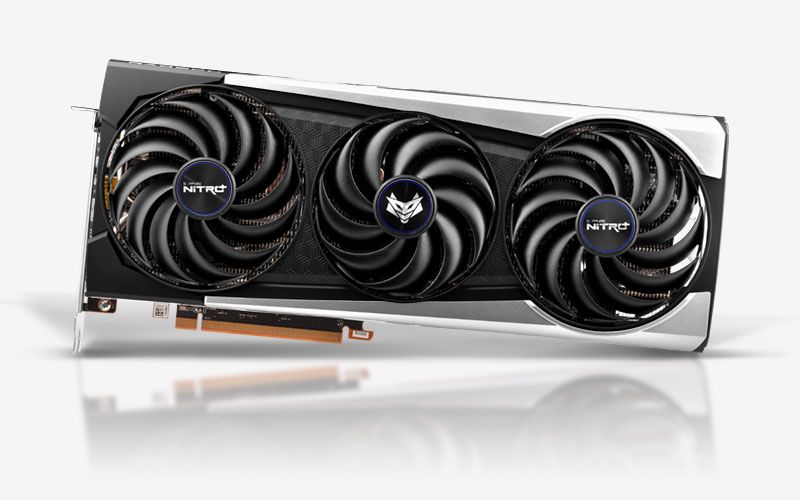I think GPU manufacturers see mining as a double edged sword.
Perceived demand is a double-edged sword, I'd say.
Any excess demand has to be weighed with the risks of both not meeting the demand and
also increasing production to meet demand.
Once manufacturers start hitting production capacity limits, and that's
forecasted limits as they're placing future orders when doing so, they run the risk of overproducing and the negative associated ROI.
In general, we can say that production while rocky lately has been on a steady increase, but demand has rocketed up
even more, and for a variety of reasons that include but also extend far beyond mining.
The pandemic is one: while many people have been out of work, many other people have been working, drawing salaries, even higher ones due to overtime, and have had fewer outlets for their disposable income. Given that GPUs were a luxury item in the first place and it's easy to see how increases in existing sources of demand could have come about.
Then there's AI / ML / general datacenter compute, and this isn't going anywhere but up either. GPUs are still far more capable for heavy compute workloads than CPUs and unlike custom silicon that would be even faster, GPUs are already available and the infrastructure needed to take advantage of their capabilities is well understood. And you can get them anywhere from big iron down to near-ultrabook laptop form-factors and even in mini-PCs, which is helpful for 'field' workloads where the compute is needed well away from datacenters.
And mining itself: well, mining causes a problem for GPU manufacturers in that as mentioned it's extremely fickle in terms of demand, which tends to oscillate between the extremes either causing empty shelves or extremely full ones.
Further, to the point about trying to 'pick one's customers', well, this is very hard to do
legally, and likely impossible to do for GPUs. Literally anyone can be a 'miner', anyone could both game and mine on the same GPU hardware, and even if there were some check put into place, the legal questionability of that check would make it near moot. Would AMD or Nvidia sue their customers for buying gaming GPUs and then not using them to game?
I get, share, and really appreciate the
idea of trying to sell GPUs to gamers first, I just can't imagine how it would actually happen. From a business and market economics perspective, raising prices is actually how this is done!
So mining, do both companies see that as the more favorable Market in the long term over the PC Gaming Market?
I answered this in part above, but I wanted to add a bit more: mining is pure speculation. It's one of the worst forms of speculation too, since it results in a technological product that derives its value on the perception that it's unique, as a gross oversimplification.
For GPU manufacturers to
dedicate parts to mining would be... stupid. They can absolutely 'tune' for mining throughout their technology stack but the production of dies that couldn't be put to other purposes is almost certainly out of the question unless the traditional market for GPUs dries up or excess fab capacity sees a massive increase.
The production of mining-specific SKUs like we're seeing now and have seen a few iterations of already is likely more of a 'feeler'. The GPU dies themselves are the same, but they're packaged in a way that makes them unsuitable for other uses. The sales of these will help gage actual demand for mining.
Have, or will we see PC Gamers give and make the move to console gaming, or simply pull back from gaming if this trend continues into 2022 or beyond?
'PC gaming' or desktop gaming is pretty weird. In a lot of ways from the outside it doesn't make much sense, or at least it's not a destination most would have predicted!
And we still really can't. In a few decades everything could change, or not. Who can say?
Overall, it's certainly reasonable to ask the question though. I'm glad you asked it as otherwise I wouldn't really be considering it, and I'll paraphrase here:
What happens if the 'hardware' for PC gaming, that being CPUs that can actually run games well and GPUs tuned for rendering, just becomes unavailable?
As a dedicated, still mostly young PC gamer, that's a hard one for me to contemplate. I know that the hardware on my desk now isn't made to last, at least not decades. The mechanical parts are destined to fail simply through their own operation and the electrical components would have to be very well designed and protected to keep going, and however well they're designed, I know also that I cannot afford the proper protection. I don't even know what it would take, in terms of power filtering, temperature controls, EMI and other radiation shielding, to keep the electronics going indefinitely, while things like LEDs and the TFTs in LCDs are certainly going to wear out.
And if there weren't replacements available for them, what would we do?


